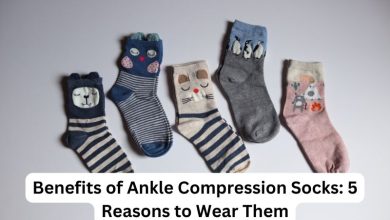Hunting clothing is an important piece of equipment

Hunting clothing is an important element of the equipment of a serious hunter. Modern clothing for hunting should provide the hunter with comfort, keep the heat well, and keep the hunter’s body dry during serious physical exertion. You need to approach the choice of hunting clothing with all seriousness, because there are no trifles in hunting. Let’s try to understand this issue in more detail.
Adherents of the most popular types of outdoor activities – hunting, fishing and tourism, like no one else, need special clothes that best suit their favorite pastime. Such clothing should protect from cold, wind, rain and fully correspond to the season of use.
Hunting Clothing Requirements
In order for hunting clothing to meet the needs of the hunter, special requirements are imposed on it:
- Material – the main requirement for the material from which hunting clothing is made is its noiselessness. A hunter moving both in the forest and in the open space should not be heard by his future prey. Hunting often takes place in difficult weather conditions, so the material from which hunting clothing is made must be moisture-proof and not windproof. Only such materials can reliably protect the hunter from rain and wind.
- Coloring – camouflage, a variety of colors, is the main color of clothing for hunting. In addition to camouflage colors, hunting clothes are often sewn from fabrics of protective colors: olive, gray, brown, khaki, gray-green and others. The main requirement for the color of clothing for hunting is its correspondence to the color of the area where the hunt will take place. In the forests, it will be green shades, and in the steppe zone, it will be yellowish shades.
- Comfort in movement – clothing for hunting should have a loose enough cut so as not to restrict the movement of the hunter, so it should be designed in a special way.
- Thermal comfort – hunting clothing should keep the hunter warm in the cold season, and in hot weather it should effectively remove heat from the body and thereby cool the hunter.
- Details and accessories – clothing for hunting should be thought out in the smallest detail: convenient zippers, a large number of pockets that fasten and are located in the right places, Velcro, pads, everything should be made so that it is convenient for the hunter to use it.
Three Layers of Modern Hunting Clothing
Modern hunting clothing consists of three layers, each of which performs its own function: as a rule, the hunter’s underwear is thermal underwear, the middle layer is fleece clothing, outerwear and trousers are clothes made of membrane fabric or fleece clothing with a membrane.
Hunting thermal underwear
The selection of clothing for hunting begins with the correct choice of a layer of clothing that is in direct contact with the hunter’s body, with hunting thermal underwear. Thermal underwear can be made of a variety of materials: wool, cotton, bamboo, algae, a variety of polymers.
Hunting thermal underwear has two important tasks: it must keep the heat coming from the hunter’s body and at the same time remove the fumes coming from the human body as much as possible.
Clothing itself does not warm a person, it only retains the heat coming from the person’s body. The more air a garment has, the better it retains heat. Wool retains heat best, then cotton, and only then synthetics.
But any garment retains heat only until it gets wet. As soon as the wool is saturated with moisture, it ceases to retain heat and, on the contrary, begins to remove it, which is why a person freezes.
To solve the problem of creating a wool replacement, ultra-thin microfibers from synthetic polymers were created.
Unlike wool and cotton, synthetic polymers such as polyester, acrylic and polypropylene do not absorb moisture, so clothes made of this material do not absorb water, but pass it through themselves, then moisture either evaporates and is blown away by the wind, or is absorbed into the top layer of clothing and then also comes out.
Depending on the structure of the fabric, there are three types of hunting thermal underwear:
- Single-layer – consists of a single layer, can be made of both natural and synthetic fabrics, suitable for not too low temperatures
- Two-layer – consists of two layers, each of which has its own special properties, also called hybrid, optimally suited for low temperatures
- Three-layer – in its structure it is identical to two-layer thermal underwear, but additionally has a third lower layer that has anti-allergenic properties
Various natural and synthetic materials are used for the production of hunting thermal underwear:
- Wool is a natural material, it retains heat very well, but it absorbs moisture very strongly, when wet, it dries for a very long time, and in contact with the body it can cause irritation and allergies
- Cotton is a natural material, retains heat worse than wool, absorbs moisture strongly, and feels pleasant on the body
- Polyester is a synthetic material that absorbs little moisture, retains heat well, is inexpensive and unpretentious in care
- Polypropylene is a synthetic material, the best material for the production of thermal underwear, does not absorb moisture, retains heat well
- Bamboo and eucalyptus are natural materials, fibers are added in the manufacture of fabrics, give strength, do not cause allergies, and have an antibacterial effect
Hunting thermal underwear is selected depending on the type of physical activity of the hunter:
- Minimal activity – calm movement at low temperatures, without heavy sweating, which does not require immediate moisture removal.
- High activity – active movement and physical work at sub-zero temperatures, causing heavy sweating.
- Mixed activity is a constant alternation of active activities that cause sweating and a state of rest
After the hunter has decided on the type of physical activity and the ambient temperature at which he will wear thermal underwear, you can choose the material of thermal underwear suitable for such requirements.
Maximum sweat dissipation, poor heat retention – light thermal underwear, synthetics, single-layer. Maximum sweat dissipation, medium heat retention – single-layer or double-layer synthetics with micro-brushing. Maximum sweat dissipation, maximum heat retention – two-layer or three-layer, synthetics plus fleece.
Medium sweat wicking, medium heat retention – single or double layer, synthetics at least 40%, plus wool, viscose or micro-brushed cotton. Medium heat dissipation, maximum heat retention – two or three layers, synthetics at least 40%, plus wool, viscose or cotton in the form of fleece.
In order for hunting thermal underwear to cope with its functions, it needs to be properly cared for. Check the manufacturer’s recommendations on the label and packaging, follow these rules when caring for the product. Wash thermal underwear as often as possible, dirty thermal underwear has clogged micropores and it stops warming and properly removing moisture. If the hunt lasts several days, take an additional set of thermal underwear with you. To prevent thermal underwear from smelling, use the maximum allowed temperature when washing. Do not use softener or iron it.
Fleece layer of hunting clothing
In order for the lower layer of hunting clothing, thermal underwear, to perform its functions correctly, the clothing worn over it must also be functional, it must take moisture from the upper surface of the underwear and conduct it to the outer, last layer of clothing, from which evaporation into the environment occurs.
If clothes worn over thermal underwear do not allow moisture to pass through them, then they are absorbed into these clothes and a person begins to freeze.
The best option for clothes that are recommended to be worn over hunting thermal underwear is fleece clothing. Fleece fabrics have made a real revolution in hunting clothing, they have unique properties, they remove moisture from the body, but at the same time do not allow raindrops, dew, condensation to pass through. The first fleece clothing was produced in 1979 under the Polartec brand by Malden Mills. The name of the fabric comes from the English word “fleece”, which translates as sheep’s wool. Fleece fabric is made of synthetic polyester material, to which, for additional properties, a number of other fibers, such as lycra, can be added. In the production of fleece fabric, the fabric is rolled with special rollers covered with miniature hooks, which create air pores inside the fabric, thanks to which the fleece becomes very heat-retentive.
Fleece fabric can be used to make hunting clothing both on its own and in tandem with a special membrane fabric. Membrane fleece is used for the production of hunting outerwear, suits and overalls.
Fleece fabrics differ in density: 100, 200, 300 g/m2. The greater the density of the fleece, the warmer the clothes made from it. For thin models of hunting clothing, single-sided fleece is used, for warmer products – double-sided fleece
Fleece perfectly warms, breathes well, dries very quickly after getting wet, and does not cause allergic reactions.
Fleece fabrics do not require special care conditions; it is better to wash them in water with a temperature of no more than 40 degrees. Fleece is machine washable. Special care is required for hunting clothes sewn from fleece with a membrane, be sure to carefully study the labels that indicate the conditions for washing such things.
Top layer of hunting clothing
Modern hunting clothing is made of membrane fabrics. Membrane fabric is a special type of fabric that has a special structure and has high water-repellent and windproof properties, while allowing water vapor emitted by the human body to pass through it.
Membrane fabric is made up of several layers, each with its own function, an upper wear-resistant layer, a lower soft layer, several protective layers, and the membrane itself placed between them.
The world’s first membrane fabric was Gore-Tex, which was developed for use in space, for many years this fabric was protected by a patent, but after the patent expired, other manufacturers released their own membrane fabrics with similar properties.
Membrane fabrics are widely used in the production of clothing for hunting, fishing, tourism and other outdoor activities. Membrane fabrics allow you to stay dry in the rain, while the fabric does not interfere with the removal of sweat from the body.
Membrane fabric is used in the top layer of hunting clothing, protecting the lower layers of clothing from getting wet. The membrane prevents the hunter from getting wet and brings sweat out.
Membrane fabrics can be two-layer, three-layer and 2.5-layer in their structure.
- Two-layer membrane fabric consists of an outer layer of fabric, on which a membrane is applied from the inside out, and on top of the membrane there is a lining that protects the membrane from clogging and mechanical damage.
- Three-layer membrane fabric consists of a top layer fabric, a membrane and a fine knitted mesh from the inside out, all three layers are glued together using lamination technology. The mesh protects the membrane from clogging and damage.
- A 2.5-layer membrane fabric is a two-layer membrane fabric that is covered on the inside with a layer of protective coating in the form of bumps. It is the newest and most advanced type of membrane fabric.
There are three types of membranes that make up membrane tissues:
- Non-porous moisture evaporation membranes fall on the inner side of the membrane, pass to the outside of the membrane through diffusion and evaporate. They are the least capricious of membranes, do not require gentle care, and are durable.
- Pore membranes are made up of microscopic pores, water droplets from the outside of the membrane cannot pass through it, and sweat in the form of vapor coming from the human body freely passes through the pores of the membrane to the outside. The disadvantage of pore membranes is that they are easily damaged and lose their properties.
- The combined membrane is the most high-tech and expensive among the membranes. The combined membrane consists of a fabric covered with a porous membrane on the inside, on which a thin polyurethane porous membrane coating is applied. The combined membrane combines all the advantages of both porous and non-porous membranes, but at the same time does not have their disadvantages.
High-quality hunting clothing made of membrane fabric should have glued seams so that moisture cannot penetrate through the joints of various parts of the clothing, and the hunter remains dry.
Hunting clothing made of membrane fabric requires careful care. Membrane clothes should not be soaked, washed in a washing machine, used with ordinary detergents, wrung out, ironed. It is necessary to use special detergents for membrane fabrics. Clothes made of membrane fabric should be dried flattened, at room temperature, in a horizontal position. Such clothes should be stored straightened, in an upright position, in a fabric or polyethylene cover.
Clothes for woodcock hunting on draught in spring
It is not necessary to wear hunting camouflage clothing to hunt woodcock on a draught. The best option would be to wear single-layer thermal underwear, put on a thin fleece jacket over it, and on top of it outerwear hunting clothing, which can be both camouflage and just a protective color: brown, gray, dark green.
You can wear a hunting cap on your head, but since the weather in spring can be unpredictable, it will be better if you put a warm wool or fleece cap in the pocket of your jacket or backpack.
The best footwear for woodcock hunting in the spring will be hunting boots just below the knee, as in the spring there is a lot of water, streams and puddles in the forest, which you will have to overcome on the way to the place of traction. Be sure to wear thick warm socks on your feet.
Thin gloves will not be superfluous on such a hunt, which will not let your hands freeze and will not interfere with your shooting.
Clothes for drake hunting in spring
To hunt drake in the spring, the hunter will definitely need a good high-quality camouflage. It is desirable that the color of the camouflage corresponds to the color of the area where the hunt will be carried out. The camouflage should not rustle and should be warm enough.
The best option would be to wear two-layer thermal underwear under camouflage, put on a fleece jacket over it.
You need to wear a warm woolen or fleece cap on your head. It is desirable that it is also camouflaged.
Warm gloves should be worn on the hands, which will warm the hands and will not interfere with shooting.
The best footwear for drake hunting in the spring would be wading boots or even neoprene wading overalls. Thick warm socks are a must.
Clothes for duck hunting in autumn
At the beginning of the duck hunting season, the weather is warm and dry in most of our country, so the optimal clothing for this period will be a long-sleeved T-shirt (longsleeve) of camouflage colors in the colors of the area where the hunt is conducted, the same trousers. The best choice of shoes would be wading boots. You can wear a baseball cap with a long visor on your head.
Closer to the middle and end of the season, colder and rainier weather sets in, in such conditions, high-quality camouflage made of membrane fabric is required. The color of the camouflage should be suitable for the conditions of the area where the hunt is being conducted. Under camouflage, you can wear single-layer thermal underwear, wading boots on your feet. The colder the weather gets, the warmer the duck hunter should be dressed. Single-layer thermal underwear can be replaced with two-layer, and a fleece jacket can be worn under camouflage.
Clothing for hare hunting in winter
Hare hunting in winter places increased demands on the clothing in which the hunt is conducted. Hare hunting is carried out at sub-zero temperatures and involves high physical activity of the hunter.
The best choice of clothing for hare hunting will be camouflage made of membrane fabric in the color of a snow-covered field. Under it, you need to wear one-layer or two-layer thermal underwear and a jacket made of fleece fabric.
On your feet, you can wear special winter hunting boots made of membrane material or warm boots made of foam material.
You need to wear a warm woolen or fleece cap on your head. It is desirable that it is also made of camouflage with an admixture of white.
Warm gloves should be worn on the hands, which will warm the hands and will not interfere with shooting, and warm gloves can be worn over them, which can be quickly thrown off before shooting.



